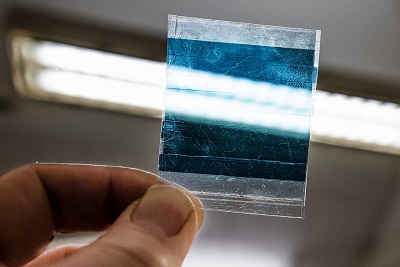The organic solar cell market is likely to incite substantial development due to ever growing energy demands in various end-user applications. Coupled with the call for renewable energy sources and the cost-efficiency of solar panels in the electricity generation sector, rapid rise in polymer solar cells market has been posted in recent years.
Organic solar cells are preferred over traditional solar cells because of its physical properties such as design and flexibility which allows organic cells to be easily converted into desired shapes and colours. The organic solar cells market can be classified through its various applications such as building integrated photovoltaic applications (BIPV), defense applications, space research, mobile applications and other conventional solar applications. BIPV held the biggest share in the market followed by mobile applications and other conventional solar applications. However, low efficiency and shorter life span pose as major obstacles for the organic solar cell market.
The global polymer solar cells market can be divided into seven regions, namely North America, Latin America, Western Europe, Eastern Europe, Asia Pacific, Japan and Middle East and Africa. Currently, North America holds the lead in the global polymer solar cells market owing to its dominant presence in the energy and power sector. Asia Pacific comes in second because of the growing electronics and electrical industry, in particular China and Japan. Despite being dislodged to the third place, Europe is still an area to map in the region with its flourishing automobiles industry. Latin America is also gaining importance in this market due to the investments of this region in the energy and power sector, while India is eyed as a potential market owing to government regulations that support power generation from renewable resources.

Finding light through research
Consumers and industries are usually deterred from installing large-scale commercial solar cells due to its complex production process and the high manufacturing cost of silicon solar cells. With the rising need to find a way to conserve on the use of fossil fuels and promote alternative clean energy, there is a lot of research to generate alternative technologies with regards to this renewable energy source. A photovoltaic cell uses organic electronics and is known as an organic photovoltaic (OPV) cell, which flexible and composed of large molecules with repeating structural units and can produce electrical energy from sunlight by photovoltaic effect. Organic solar cells contain a type of thin film which can be less expensive to manufacture, lightweight, easily disposable and recyclable, thus making it more environment-friendly
According to the research team at Linköping University, the ability to use cheap materials and simple manufacturing methods are two huge advantages of printed organic solar cells. The team has developed an even simpler method to manufacture solar cell modules. Professor Olle Inganäs of biomolecular and organic electronics at Linköping University explains the inner workings of a semi-transparent solar cell: electrodes with two variants of the polymer PEDOT:PSS (commonly used in organic electronics) are used, where one acts as the anode and the other is modified to become the cathode. The stripes across the solar cell module are lines of either cathode-type or anode-type material. The active layer that absorbs light and produces electrons is located between these electrodes. The individual solar cells are connected in series in the module.
During the manufacturing process, when the electrodes and the active layer are printed as thin films on top of each other, defects in one layer become the catalyst for points of attack for the next layer to be printed. These defects cascade on each other and cause short-circuits between the top and bottom. Until now, this problem has been solved by passing a current through the cell. "The defects in each individual cell must be burned away. Not only is this time-consuming, it's not easy to gain access to all cells, and this means that the reject rate for faulty units is quite high," Prof. Inganäs said.
To remedy this, researchers found that using the active polymer material as a glue counteracts these defects. Two plastic films, one with the anodes and the other with the cathodes, are covered by the active material before the complete unit is laminated together. Since only two layers are to be printed, the number of defects is lower and the probability that two defects are located exactly opposite each other during the lamination is negligible.
The team has also been able to solve the issue on moisture which is found out to be the number one cause of trouble for current OPVs. The problem can be solved by manufacturing the anode and cathode films, and then rapidly laminating them together with the active polymer in a protective atmosphere. "We have shown that this lamination method works with many different combinations of polymer, and that the energy efficiency is just as high as that obtained by conventional manufacture," according to Prof. Inganäs.
The solar cell modules, developed by the research team Linköping University, are being manufactured by the spin-off company Epishine which has targeted the market for indoor cells. Indoor light will power these cells and create enough current to power, for example, sensors that keep track of pets and/or children when left alone at home or keep track of the humidity or temperature indoors. Light generated indoors has a different spectrum and intensity than sunlight, so the conditions of use are simpler and the efficiency high.
Nike Air Jordan
 iConnectHub
iConnectHub
 Login/Register
Login/Register Supplier Login
Supplier Login



























